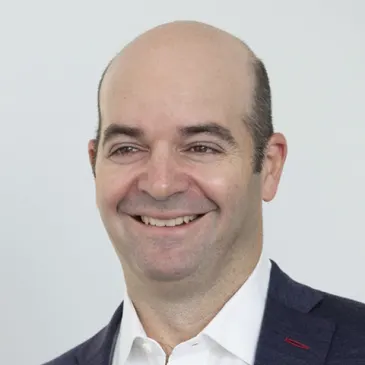As the current business cycle swings into volatile territory across the country, sponsors, lenders, and management teams will be faced with difficult choices in how to maximize value from troubled businesses. Amid declining consumer sentiment, investors weary of a recession, higher interest rates, and increased counterparty risk, creative solutions should and uncommon strategies should not be left off the table.
For non-retail companies facing financial distress, the traditional wisdom is that the value-maximizing solution is to reorganize. But as the slow demise of generic pharmaceutical manufacturer Akorn shows, there may be flaws in that thinking. A postmortem on the company demonstrates that certain characteristics advantaged a liquidation over a reorganization.
As we enter a new restructuring cycle, understanding these attributes may mean the difference between maximizing the value of a troubled company through liquidation today, versus investing the time and capital pursuing an uncertain turnaround.
The Story of Akorn
In 2017, Akorn was poised for a merger with German pharma firm Fresenius Kabi. In post-announcement diligence, it became apparent that Akorn had significant quality control and regulatory compliance issues, as well as a diminishing financial outlook. Fresenius filed a lawsuit to terminate the transaction, which they would win. The termination of the deal and associated issues led Akorn to engage AlixPartners and eventually file for Chapter 11 in 2020, turning over the company to its creditors—the preferred path forward at the time.
Let’s look at why, and how, that strategy played out.
Aside from its manufacturing facilities, Akorn’s primary assets were its abbreviated new drug applications (ANDAs)—essentially an approval granted by the FDA to manufacture generic products without requiring clinical trials.
In the Chapter 11 proceedings, the best-interest-of-creditors test assumed only six ANDAs would have value to a new owner given the difficulties of “tech transfer”—in order to comply with FDA regulation, a potential purchaser would have to incur significant time and expense to certify a new facility for manufacture of that product. This put the total liquidation value of the ANDAs between $76 million and $153 million. In aggregate, the hypothetical liquidation value of Akorn’s assets was far below the value provided by Akorn’s pre-petition term loan lenders in their Chapter 11 credit bid. More importantly, the credit bid also allowed the new owners of the reorganized business the opportunity to implement a turnaround plan with the hope of monetizing the entity in part or in whole post-restructuring.
After emerging from Chapter 11, Akorn rationalized its product portfolio, selling the consumer health products to Prestige Consumer Healthcare and seven branded ophthalmic products to Thea Pharma, Inc., allowing the lenders, who continued to hold take-back paper, to recoup $243 million against their loans.
Fast forward to 2023, and Akorn filed for Chapter 7 on February 23 after attempts to sell the business failed, caused in part by the Company’s government pricing liabilities owing to the Center for Medicare & Medicaid Services (“CMS”). AlixPartners was reengaged to represent Akorn’s term loan lenders. To all the restructuring professionals’ surprise, the liquidation in Chapter 7 recovered $309 million of value from Akorn’s ANDAs and other asset against $184 million of secured debt.
While Chapter 7 is a “dirty word” for restructuring professionals, it has proven to be the value-maximizing outcome in this instance. So, is Akorn an anomaly or is there something to be learned regarding when to seek a liquidation? And, if the assets of the business were so valuable in this case, why didn’t the whole-company sale processes yield greater value?
The macro environment influences valuations of individual assets
The 2010 Affordable Care Act and the 2012 Generic Drug User Free Amendments were intended to boost the dwindling number of generic pharmaceutical manufacturers and reduce price pressure for consumers. However, in the years that have followed, the opposite has occurred. Generic drugs now typically compete in markets with limited competition, with two being median number of suppliers in a market, and 40% of markets supplied by only one manufacturer.
Further, the number of active drug shortages in the U.S. reached a peak of 295 at the end of 2022 (a five-year high). Between 2021 and 2022, new drug shortages increased by nearly 30%.
An ongoing shortage of pharmaceuticals means that certain products produced by Akorn—pediatric albuterol and the antidote for lead poisoning for example—are in high demand.
Akorn’s products, which were typically unique dosage forms of common molecules, were no exception. A buyer, in many cases could expect a monopolistic or duopolistic market position or could defensively purchase an ANDA to protect their improved market position with Akorn’s demise. Prices for entry into a market with a limited number of competitors is significantly higher than those for a competitive market.
Finally, in 2020, the COVID-19 pandemic drove slowing purchases of generics by the large pharmaceutical wholesalers as they sought to carry less inventory in the initial months of pandemic uncertainty. At the time, this radically impacted Akorn’s financial performance during the 2020 Ch. 11 proceedings. Wholesaler purchasing patterns would not “normalize” till Q4 2020 after Akorn had emerged from bankruptcy. This understandably placed downward pressure on the ANDA values in the 2020 hypothetical liquidation value.
This squeeze on generic pharmaceutical supply, and the exit from the pandemic, drove the higher valuation of the ANDAs during Akorn’s second bankruptcy. Overall, Akorn’s product portfolio proved highly valuable to the right purchasers.
For chronically troubled businesses, liquidation may be the best result
Akorn has always been troubled, beginning with the attempted merger with Fresenius Kabi. In a precedent-setting court case, the Delaware Chancery Court found that Akorn’s lack of quality controls and a precipitous decline in financial performance following the consummation of the merger agreement amounted to a Material Adverse Effect (“MAE”).
Following the termination of the merger agreement, Fresenius filed a motion for summary judgment seeking claims and damages of $123 million. At the time of Akorn’s 2020 Chapter 11 filing, the court was still reserving decision on $74 million. There was also securities class action litigation from Akorn’s equity holders. All of the above triggered events of default under Akorn’s term loan credit agreement.
Unrelated, but also noteworthy, John Kapoor, former majority shareholder in Akorn and chairmen of the board, was sentenced to prison for opioid racketeering.
Leading up to the 2023 Ch. 7 filing, Akorn sought a going-concern sale of all of its assets. This did not prove fruitful, as it was discovered that Akorn under-rebated certain U.S. government drug purchasing entities (Centers for Medicare & Medicaid Services, Veterans Affairs, etc.) to the tune of $80 million over the last 10 years. This liability was assumed in the credit bid of the 2020 Chapter 11 filing by new Akorn via the labeler code (an FDA-assigned code to drug manufacturers).
Due to Akorn’s operational, quality control, and record-keeping issues, there was always a cloud over the valuable assets of the business. This made it easier for potential whole-company buyers to discount the purchase price.
Sales processes heavy on financial buyers may result in going-concern values below the liquidation value
In the run-up to both Akorn’s 2020 Chapter 11 filing and the 2023 Chapter 7 procedure, a going-concern sale process was performed. In both instances strategic, financial, and sponsor-backed pharmaceutical companies were on the outreach list.
The sales process in 2020 did not generate any bids in excess of the first lien term loan ($861.7 million). In 2023, the same thing occurred. However, the subsequent Chapter 7 auction generated proceeds of $309 million, far in excess of the pre-petition secured debt.
Financial, and sponsor-backed buyers traditionally are not the highest bidders, given the lack of potential synergies that can be generated by a transaction, and private equity’s love of buying things on the cheap. A process heavy on these buyers, with a target with a lot of “hair” on it, may generate whole-company bids below liquidation value—as it did in this case.
Biases should be re-examined
Other than retail, where liquidations are more common, the bias is to reorganize a troubled company. This is commonly reflected in the best interests of creditors test, which has an unspoken rubric that is fairly difficult to throw stones at:
- Cash and marketable securities: 100% recovery value.
- Asset-based loan advance rates are typically leveraged for recoveries on current assets (75-85% for accounts receivable, 55-65% for finished goods inventory, with lower values for raw materials next to 0% recovery on work-in-process)
- Other current assets are typically valued near 0% (a prepaid expense) or 100% (a tax refund receivable)
- Non-current, non-real estate tangible real property is typically assigned recoveries of 15-25%
- Any owned real estate leverages a recent appraisal report that can be easily obtained
- Intangible assets (though more subjective with multiple valuation methodologies) are allowed to have significant reliance on management’s judgment
This rubric rarely results in a best-interest-of creditors test where the value is remotely close to that delivered in a reorganization. The subjectiveness of a forecast supporting a reorganization (often up and to the right!) and of a liquidation analysis can allow for unfeasible plans to shape reorganizations and “on paper” recoveries to creditors.
With increasingly common Chapter 22 filings (and in this instance, a Chapter 18), creditors are playing out the option, knowing that for the reduced cost of a pre-packaged or prearranged filing, they can reinvest as the reorganized owner of the business in the hope of a turnaround and future lucrative transaction. The fallback option is always a liquidation.
The key assumption here is that value generated in a liquidation remains consistent whether pursued out the outset or delayed until the “option” has expired. But this might not be the case. Akorn’s Ch. 11 took place during depths of the COVID pandemic, whereas in 2023, the more stable macro environment likely yielded a more engaged buyer universe. This, in addition to the contracting supplier universe, showed the timing was right in this instance.
Finally, beyond rethinking value, restructuring professionals should reevaluate their willingness to work in Chapter 7. Greenhill, the Lenders’ investment banker in the 2020 Chapter 11 and the debtors’ investment banker pre-2023 Chapter 7 filing, stayed on to market the assets in Chapter 7. Leveraging their familiarity with the estate and universe of buyers, their continued retention generated significant value to creditors.
The right fact-pattern for liquidation
In summary, there are several elements to understand in determining whether reorganization, or liquidation is the value maximizing path forward:
- Know your value: Businesses with high-value assets, and small monopolistic or duopolistic market positions, are attractive to strategic purchasers in a liquidation. A purchaser has a pretty high incentive to bid top dollar for the assets they want if they are buying entry to a consolidated market.
- Understand idiosyncratic issues: Business with a lot of “hair” and lurking liabilities may be difficult to completely “clean” in a restructuring (Akorn’s government pricing liabilities were unknowingly assumed through the credit bid APA in the 2020 Chapter 11)
- Understand the buyer universe: A going-concern purchaser may discount their purchase price beneath liquidation value to compensate for perceived risk—especially if they are a financial purchaser lacking the benefits of synergies.
- Update your priors: Given all the above, a 2023 reorganization of Akorn would have been a value destructive transaction. Further, as generic drug markets became tighter, and shortages more acute, the recovery value in a liquidation likely improved over time.
And finally, unrelated to the company and process specific attributes above:
- Know your stakeholders: Having the stakeholders willing to let the case go to a Chapter 7 is essential. Beyond knowledge for creditors, management teams and debtors’ advisors should understand when these attributes are present in a business seeking to reorganize and offer up compelling and feasible alternatives to liquidation in reorganization proposals.
There tends to be a bias that the best way to preserve and/or enhance value is to restructure as a going concern believing (or is some cases hoping) that the business can be improved and value will be maximized in a future transaction. But it may be the case that achieving maximum stakeholder value for a company destined for liquidation hinges on reaching that conclusion sooner rather than later.


